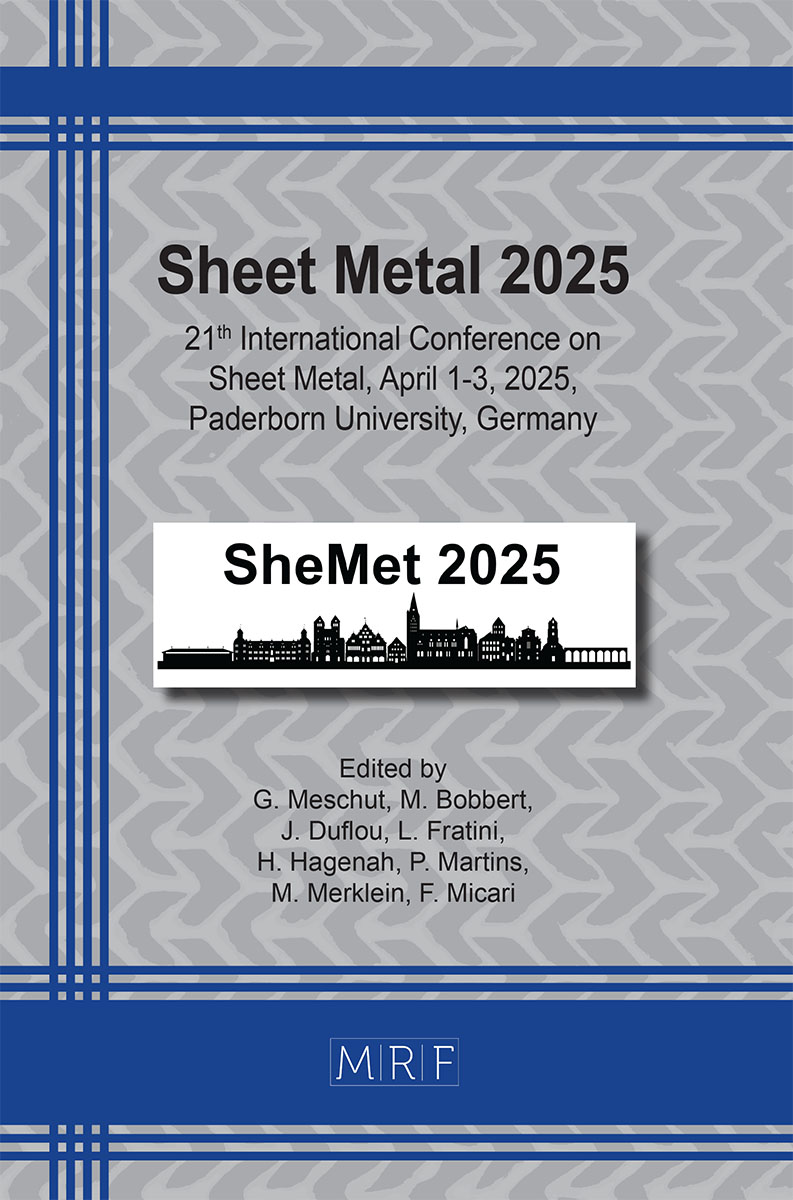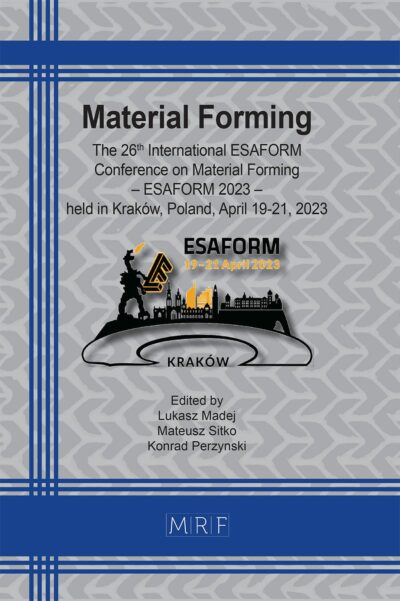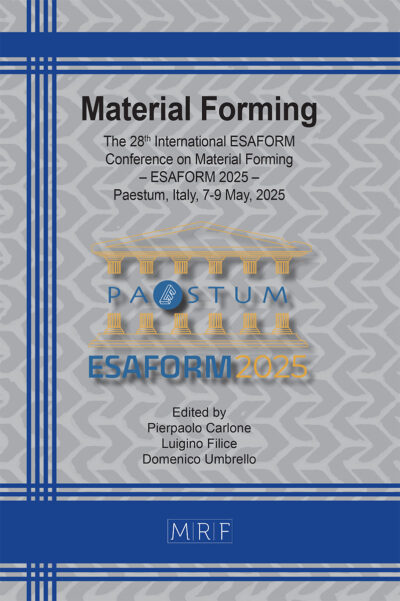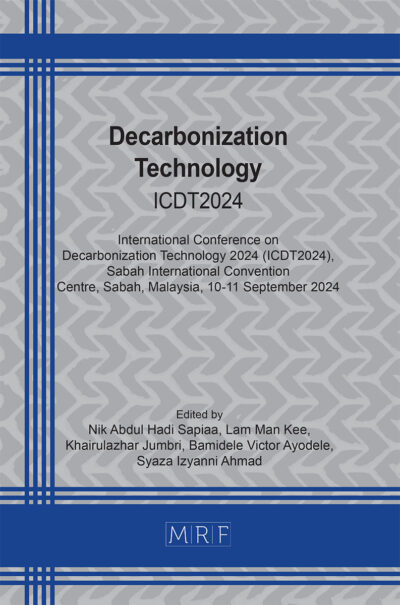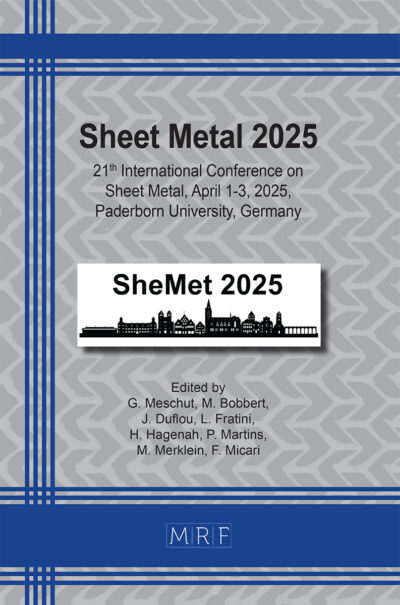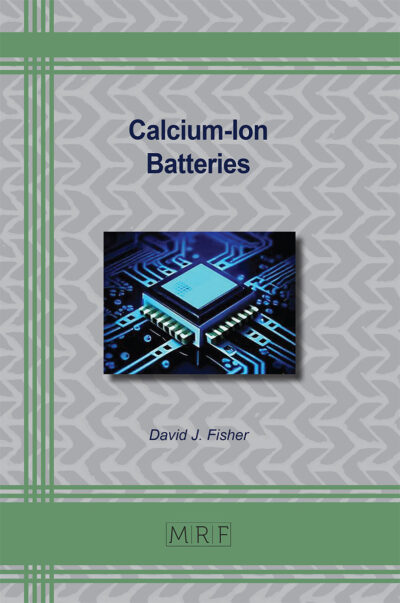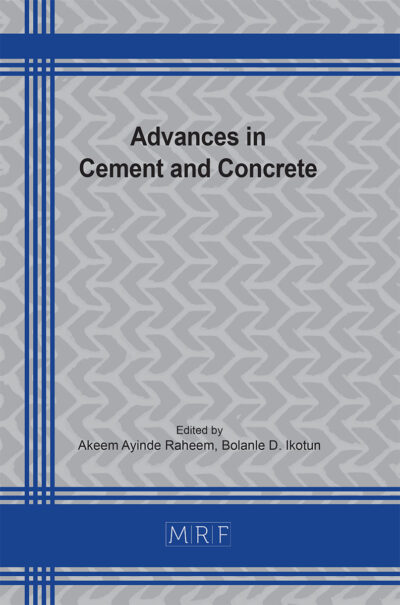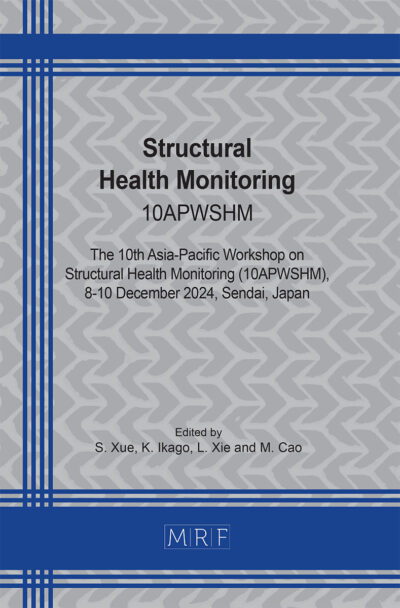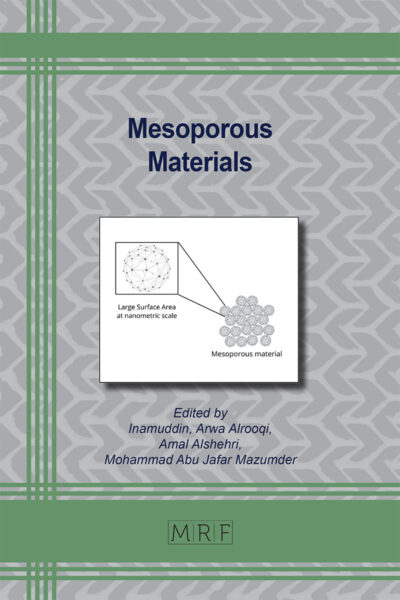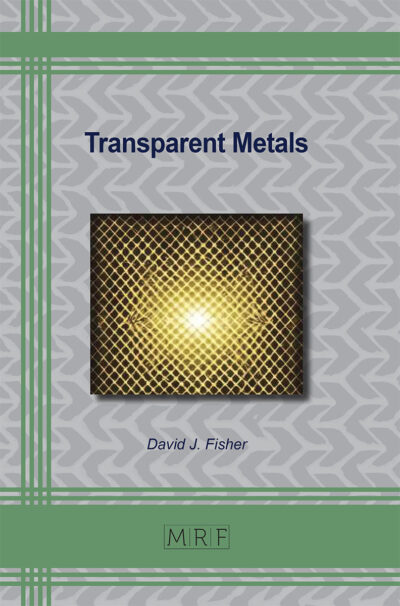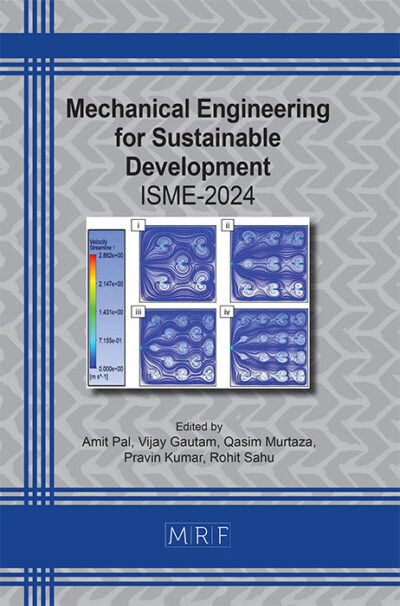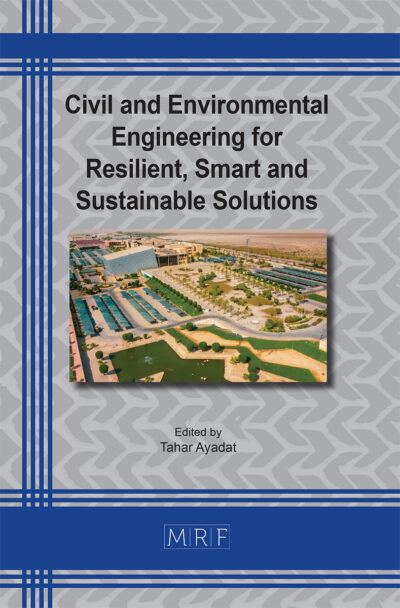Efficient failure information propagation under complex stress states in fiber reinforced polymers: From micro- to meso-scale using machine learning
Johannes Gerritzen, Andreas Hornig, Maik Gude
Abstract The failure behavior of fiber reinforced polymers (FRP) is strongly influenced by their microstructure, i.e. fiber arrangement or local fiber volume content. However, this information cannot be directly used for structural analyses, since it requires a discretization on micrometer level. Therefore, current failure theories do not directly account for such effects, but describe the behavior averaged over an entire specimen. This foundation in experimentally accessible loading conditions leads to purely theory based extension to more complex stress states without direct validation possibilities. This work aims at leveraging micro-scale simulations to obtain failure information under arbitrary loading conditions. The results are propagated to the meso-scale, enabling efficient structural analyses, by means of machine learning (ML). It is shown that the ML model is capable of correctly assessing previously unseen stress states and therefore poses an efficient tool of exploiting information from the micro-scale in larger simulations.
Keywords
Fiber Reinforced Plastic, Machine Learning, Failure
Published online 4/1/2025, 8 pages
Copyright © 2025 by the author(s)
Published under license by Materials Research Forum LLC., Millersville PA, USA
Citation: Johannes Gerritzen, Andreas Hornig, Maik Gude, Efficient failure information propagation under complex stress states in fiber reinforced polymers: From micro- to meso-scale using machine learning, Materials Research Proceedings, Vol. 52, pp 260-267, 2025
DOI: https://doi.org/10.21741/9781644903551-32
The article was published as article 32 of the book Sheet Metal 2025
![]() Content from this work may be used under the terms of the Creative Commons Attribution 3.0 license. Any further distribution of this work must maintain attribution to the author(s) and the title of the work, journal citation and DOI.
Content from this work may be used under the terms of the Creative Commons Attribution 3.0 license. Any further distribution of this work must maintain attribution to the author(s) and the title of the work, journal citation and DOI.
References
[1] D. Rajak, D. Pagar, P. Menezes, and E. Linul, “Fiber-Reinforced Polymer Composites: Manufacturing, Properties, and Applications,” Polymers, vol. 11, no. 10. MDPI AG, p. 1667, Oct. 12, 2019. https://doi.org/10.3390/polym11101667.
[2] Prashanth S, Subbaya KM, Nithin K, Sachhidananda S, “Fiber Reinforced Composites – A Review,” Journal of Material Science & Engineering, vol. 06, no. 03. OMICS Publishing Group, 2017. https://doi.org/10.4172/2169-0022.1000341.
[3] Y. Chen, X. Yang, M. Li, K. Wei, and S. Li, “Mechanical behavior and progressive failure analysis of riveted, bonded and hybrid joints with CFRP-aluminum dissimilar materials,” Thin-Walled Structures, vol. 139. Elsevier BV, pp. 271–280, Jun. 2019. https://doi.org/10.1016/j.tws.2019.03.007.
[4] B. Ravichandran and M. Balasubramanian, “Joining methods for Fiber Reinforced Polymer (FRP) composites − A critical review,” Composites Part A: Applied Science and Manufacturing, vol. 186. Elsevier BV, p. 108394, Nov. 2024. https://doi.org/10.1016/j.compositesa.2024.108394.
[5] R. Kupfer, L. Schilling, S. Spitzer, M. Zichner, and M. Gude, “Neutral lightweight engineering: a holistic approach towards sustainability driven engineering,” Discover Sustainability, vol. 3, no. 1. Springer Science and Business Media LLC, May 27, 2022. https://doi.org/10.1007/s43621-022-00084-9.
[6] B. Gröger, J. Gerritzen, A. Hornig and M. Gude, „Developing a numerical modelling strategy for metallic pin pressing processes in fibre reinforced thermoplastics to investigate fibre rearrangement mechanisms during joining“ Proc IMechE Part L: J Materials: Design and Applications (in press)
[7] A. Kaddour and M. Hinton, “Maturity of 3D failure criteria for fibre-reinforced composites: Comparison between theories and experiments: Part B of WWFE-II,” Journal of Composite Materials, vol. 47, no. 6–7. SAGE Publications, pp. 925–966, Mar. 2013. https://doi.org/10.1177/0021998313478710.
[8] L. Wan, Z. Ullah, D. Yang, and B. G. Falzon, “Comprehensive inter-fibre failure analysis and failure criteria comparison for composite materials using micromechanical modelling under biaxial loading,” Journal of Composite Materials, vol. 57, no. 18. SAGE Publications, pp. 2919–2932, May 31, 2023. https://doi.org/10.1177/00219983231176609.
[9] F. Naya, C. González, C. S. Lopes, S. Van der Veen, and F. Pons, “Computational micromechanics of the transverse and shear behavior of unidirectional fiber reinforced polymers including environmental effects,” Composites Part A: Applied Science and Manufacturing, vol. 92. Elsevier BV, pp. 146–157, Jan. 2017. https://doi.org/10.1016/j.compositesa.2016.06.018.
[10] B. Liang et al., “Multi-scale modeling of mechanical behavior of cured woven textile composites accounting for the influence of yarn angle variation,” Composites Part A: Applied Science and Manufacturing, vol. 124. Elsevier BV, p. 105460, Sep. 2019. https://doi.org/10.1016/j.compositesa.2019.05.028.
[11] D. Pulungan, G. Lubineau, A. Yudhanto, R. Yaldiz, and W. Schijve, “Identifying design parameters controlling damage behaviors of continuous fiber-reinforced thermoplastic composites using micromechanics as a virtual testing tool,” International Journal of Solids and Structures, vol. 117. Elsevier BV, pp. 177–190, Jun. 2017. https://doi.org/10.1016/j.ijsolstr.2017.03.026.
[12] G. Balokas, S. Czichon, and R. Rolfes, “Neural network assisted multiscale analysis for the elastic properties prediction of 3D braided composites under uncertainty,” Composite Structures, vol. 183. Elsevier BV, pp. 550–562, Jan. 2018. https://doi.org/10.1016/j.compstruct.2017.06.037.
[13] J. Chen, L. Wan, Y. Ismail, J. Ye, and D. Yang, “A micromechanics and machine learning coupled approach for failure prediction of unidirectional CFRP composites under triaxial loading: A preliminary study,” Composite Structures, vol. 267. Elsevier BV, p. 113876, Jul. 2021. https://doi.org/10.1016/j.compstruct.2021.113876.
[14] L. Wan, Z. Ullah, D. Yang, and B. G. Falzon, “Probability embedded failure prediction of unidirectional composites under biaxial loadings combining machine learning and micromechanical modelling,” Composite Structures, vol. 312. Elsevier BV, p. 116837, May 2023. https://doi.org/10.1016/j.compstruct.2023.116837.
[15] P. Soden, M. Hinton, A. Kaddour, “Lamina properties, lay-up configurations and loading conditions for a range of fibre-reinforced composite laminates,” Composites Science and Technology, vol. 58, no. 7. Elsevier BV, pp. 1011–1022, Jul. 1998. https://doi.org/10.1016/s0266-3538(98)00078-5.
[16] F. Rickhey, T. Park, and S. Hong, “Damage prediction in thermoplastics under impact loading using a strain rate-dependent GISSMO,” Engineering Failure Analysis, vol. 149. Elsevier BV, p. 107246, Jul. 2023. https://doi.org/10.1016/j.engfailanal.2023.107246.
[17] M. E. Johnson, L. M. Moore, and D. Ylvisaker, “Minimax and maximin distance designs,” Journal of Statistical Planning and Inference, vol. 26, no. 2. Elsevier BV, pp. 131–148, Oct. 1990. https://doi.org/10.1016/0378-3758(90)90122-b.
[18] S. Wessing, “Two-stage methods for multimodal optimization,” Technische Universität Dortmund, 2015, doi: 10.17877/DE290R-7804.
[19] V. R. Joseph, “Space-filling designs for computer experiments: A review,” Quality Engineering, vol. 28, no. 1. Informa UK Limited, pp. 28–35, Jan. 02, 2016. https://doi.org/10.1080/08982112.2015.1100447.
[20] R. G. Cuntze and A. Freund, “The predictive capability of failure mode concept-based strength criteria for multidirectional laminates,” Composites Science and Technology, vol. 64, no. 3–4. Elsevier BV, pp. 343–377, Mar. 2004. https://doi.org/10.1016/s0266-3538(03)00218-5.
[21] Proceedings of the European Conference on Spacecraft Structures, Materials and Mechanical Testing 2005 (ESA SP-581). 10-12 May 2005, Noordwijk, The Netherlands. Edited by Karen Fletcher. Published on CD-Rom, id.138.1
[22] W. Tian, L. Qi, X. Chao, J. Liang, and M. Fu, “Periodic boundary condition and its numerical implementation algorithm for the evaluation of effective mechanical properties of the composites with complicated micro-structures,” Composites Part B: Engineering, vol. 162. Elsevier BV, pp. 1–10, Apr. 2019. https://doi.org/10.1016/j.compositesb.2018.10.053.
[23] Diez, C., Ballal, N. & “rao014” Open-lasso-python/lasso-python: Home of the open-source CAE Library Lasso-Python. GitHub Repository., https://github.com/open-lasso-python/lasso-python
[24] P. Winkler, N. Koch, A. Hornig, and J. Gerritzen, “OmniOpt – A Tool for Hyperparameter Optimization on HPC,” Lecture Notes in Computer Science. Springer International Publishing, pp. 285–296, 2021. https://doi.org/10.1007/978-3-030-90539-2_19.
[25] P. Ramachandran, B. Zoph, and Q. V. Le, “Searching for Activation Functions,” 2017, arXiv. https://doi.org/10.48550/ARXIV.1710.05941.
[26] D. P. Kingma and J. Ba, “Adam: A Method for Stochastic Optimization,” 2014, arXiv. https://doi.org/10.48550/ARXIV.1412.6980.
[27] L. Yang, Y. Yan, Y. Liu, and Z. Ran, “Microscopic failure mechanisms of fiber-reinforced polymer composites under transverse tension and compression,” Composites Science and Technology, vol. 72, no. 15. Elsevier BV, pp. 1818–1825, Oct. 2012. https://doi.org/10.1016/j.compscitech.2012.08.001.

